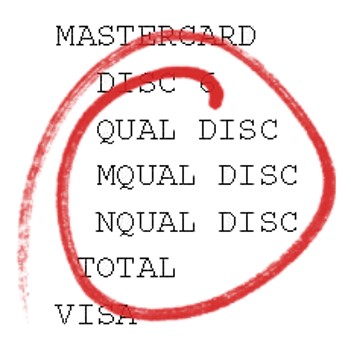If you've been running a business for any length of time, you have heard from dozens of slick speaking sales pros from the credit card industry. My bet is that many, if not all, have promised that they can beat your current rate.
Let’s take a few minutes and learn how this system works, so you will know when you are being fed a sale pitch and when you are not.
First, we’re going to see how Interchange (the Wholesale Rate), the rate charged by the card issuers (Visa, MC, Discover, and Amex) is laid out and how your processor makes their money.

Then, we will look at the four basic ways that credit card processing is priced, because understanding these four pricing methods will help you make a good decision on how you can get the best cost for your processing.

Interchange (wholesale rates)
Card-issuing banks, and credit card payment networks like MasterCard and Visa, will all charge a percentage-based fee on every transaction. This fee is called Interchange but could be understood as a wholesale rate. It's the same for everyone, and varies depending on the card type being used for the transaction. Some card types (rewards cards, mileage cards, business cards, etc.) carry a higher wholesale rate than others. This rate is written in stone and cannot be avoided.
Also included are various fees and assessments. These are legitimate fees, but are sometimes abused by processors. More about that later.
Processor Mark-up
This is where your processor makes their profit. While everyone expects to see a fair profit, let's face it, there is fair and then there is greediness.
Some merchants consider a fair mark-up to be in the range of 0.10%-0.20% plus $0.10 per transaction. If you're seeing this as a mark-up (sometimes referred to as a "Discount" on your statement) then your processor might be one of the good guys.
Unfortunately, many processors try their best to hide their mark-up by purposely making their statements confusing and hard to read. Some unscrupulous processors even make up important sounding fees that have no basis in fact at all (junk fees). They are just using the overly confusing statement as a tool to get more of your money.

Four Basic Styles of Credit Card Processing Pricing
Interchange Plus
Interchange plus is the term used to describe a merchant account pricing model where a fixed markup is applied directly to interchange fees published by Visa, MasterCard, and Discover and is sometimes referred to as "Pass Through Pricing".
The word “Plus” refers to the processor’s markup that’s applied to each credit card transaction. The markup is typically expressed as "Basis Points" or "Discount".
It can be very transparent and you should be able to see exactly what each transaction costs and also see the mark-up from your processor for that transaction.


Tiered
Tiered pricing is a merchant account rate structure that credit card processors use to assess charges. It is also referred to as bundled pricing because it allows processors to group interchange fees into general rate tiers of their choice.
Tiered merchant account pricing is currently the most common form of pricing for credit card processing services. Tiered pricing is opaque, expensive and is the vehicle for many of the hidden fees that plague the credit card processing industry.
Bundled or tiered pricing can be identified in a couple of different ways, the easiest of which is to look for the qualified, mid-qualified and non-qualified rate tiers after which the pricing model is named.
Subscription
With the subscription model (Our 0% Rate Mark-up Program), you sign up for a membership and pay a small monthly subscription fee (in our case $125-$150 per month...discounted to $99 if you are a member of one of our preferred Statewide or Regional Associations).
As a subscriber, you enjoy all of your processing at Interchange (the Wholesale Rate) directly from the card issuers (Visa, MC, Discover, Amex) with no rate mark-up at all.


Cash Discount
A cash discount program works by providing your customers with a cash and credit price. If the customer pays by cash, they receive a lower price. If they pay by credit card they pay the slightly higher price, which includes your cost of processing.
Customers that pay with cash essentially receive a discount because they will receive a lower cash price.
The end result? You eliminate your business’ credit card processing fees and encourage your customers to use cash, while still providing them with the option to pay by credit.
Ready to find out more?
Drop us a line today and we will answer all of your questions. No high-pressure sales pitch.
